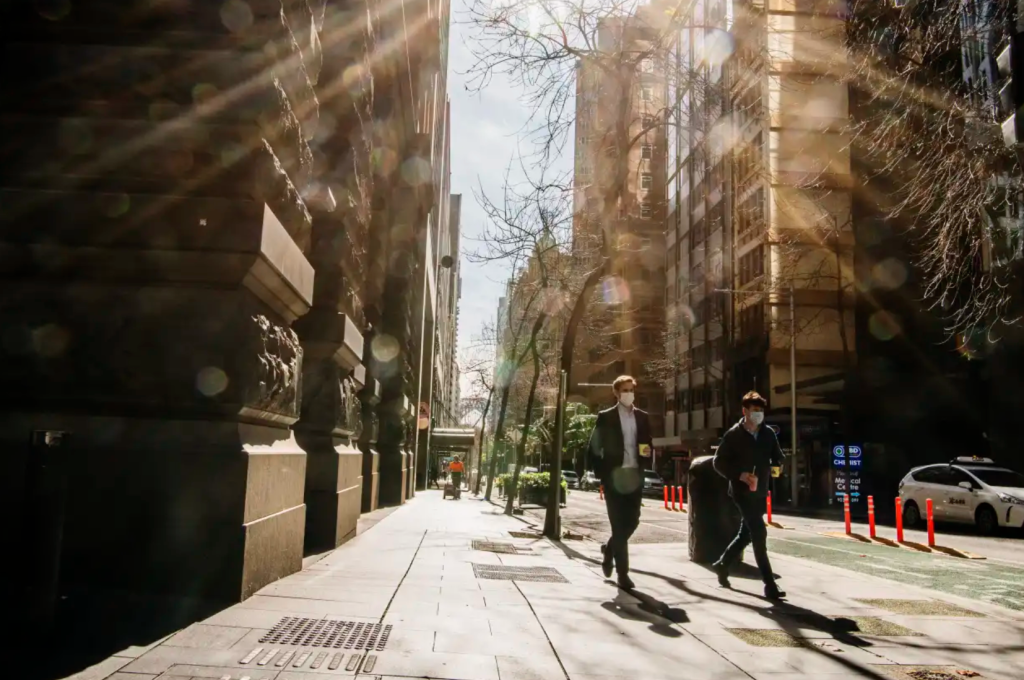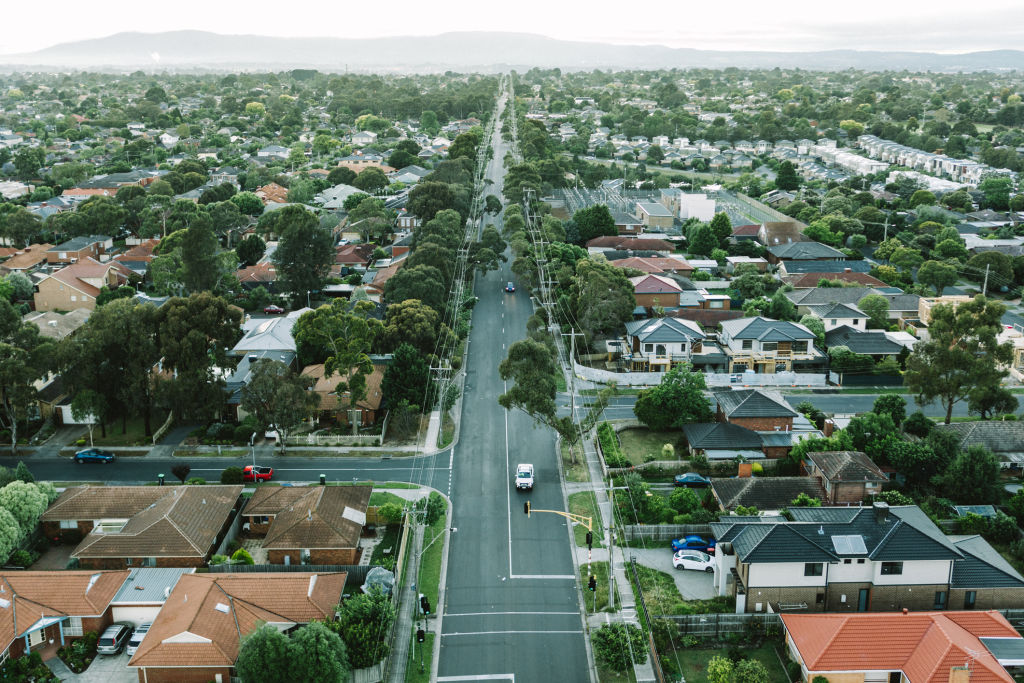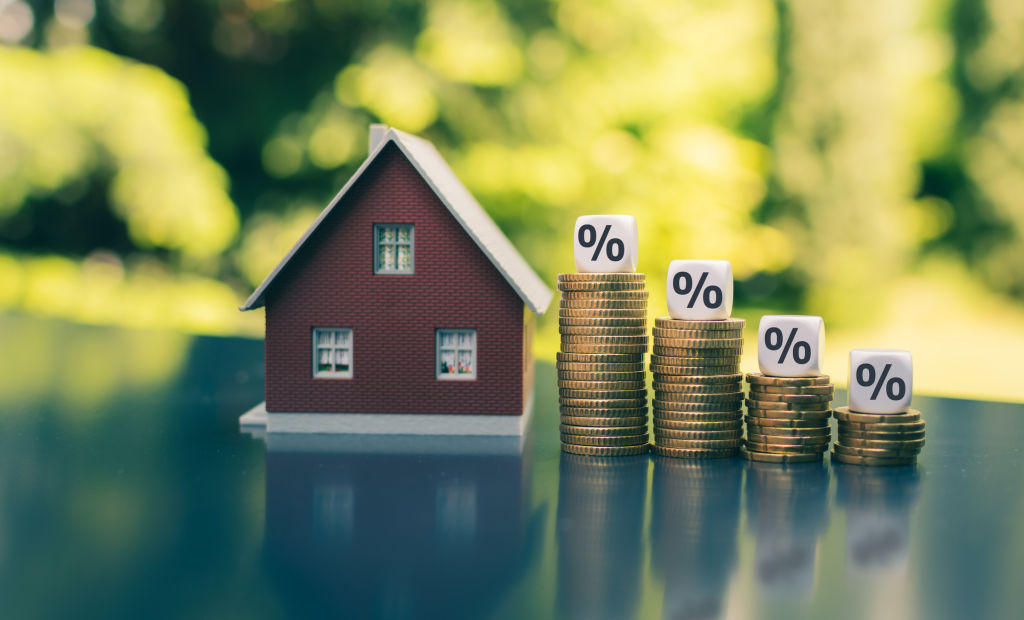Interest rates in 2025: When will interest rates go down?
It’s the question on the minds of our brightest economic experts. Will interest rates go up, go down or hold steady?
But this is not just intellectual fodder for professional economists. The cash rate is highly relevant to almost all Australians.
For those with money saved in the bank, higher interest rates mean higher returns on money held in a savings account.
For mortgage holders, it means higher monthly loan repayments.
For borrowers considering buying a property, higher interest rates translate to reduced borrowing power.
In some cases, higher interest rates can impact renters if landlords raise the rent to cover their increasing loan repayments.
What is the current cash rate set by the RBA?
The current official cash rate, as determined by the Reserve Bank of Australia (RBA), is 4.35 per cent – its highest point in the past 12 years but significantly lower than the record high of 17.5 per cent in 1990.
The cash rate has been on hold since November 2023.
The RBA’s board meets eight times a year to determine the cash rate after key data on inflation and economic activity are released.
The cash rate is the interest rate charged on overnight loans between commercial banks. Banks and lenders then set their own interest rates, taking into consideration the official cash rate.
Why are interest rates so high?
The RBA increased the interest rate 13 times between May 2022 and November 2023.
After a prolonged period of historically low cash rates – in early 2021, it dropped to just 0.1 per cent – the RBA started raising it in response to rising inflation.
The most well-known indicator of inflation is the consumer price index (CPI), which captures price changes for the goods and services that households typically buy. In 2022, the annual CPI peaked at 7.8 per cent as more Australian households felt the financial sting of rising living costs.
The RBA’s goal is to keep this figure between 2 and 3 per cent.

Inflation and interest rates are closely linked because interest rates are the primary economic lever used by central banks to respond to and manage inflation.
Many central banks across the world have also increased cash rates in recent years in an attempt to manage high inflation.
The RBA’s quick succession of cash-rate rises was criticised at the time, in part because it was at complete odds with then-Reserve bank governor Philip Lowe’s comments in 2021 that interest rates were unlikely to rise until 2024.
He later defended his comments, citing them as “conditional” and not a promise or guarantee.
Will interest rates go down in 2025?
In a statement in June 2024, the RBA board noted that inflation was easing but doing so “more slowly than previously expected”.
“The board expects that it will be some time yet before inflation is sustainably in the target range,” it said. “While recent data have been mixed, they have reinforced the need to remain vigilant to upside risks to inflation.
“The path of interest rates that will best ensure that inflation returns to target in a reasonable timeframe remains uncertain and the board is not ruling anything in or out.”
As 2024 unfolded, there was a lot of “will-they-won’t-they” uncertainty about interest rates. Some reported hopes of a cut as early as September, but the core inflation rate stayed stubbornly out of the RBA’s target range of 2 to 3 per cent, pushing hopes of a rate cut further into 2025.

By December 2024, only one of the big banks had forecast a rate cut in February. The rest predicted the cash rate would stay on hold until May, and there was even speculation that rates would stay on hold until late 2025.
Following the December 2024 inflation figures released in late January 2025, the pendulum swung hard and fast toward an imminent rate cut. Within 24 hours, the market priced the odds of a February 2025 rate cut at 95 per cent.
It is important to note that economists regularly revise their interest-rate forecasts based on economic data, such as the unemployment rate, wage growth and household spending.
What will interest rates be in 2025?
All four major banks predict a rate cut in February, which would likely bring the official cash rate down to 4.1 per cent.
More rate cuts are expected throughout the year, although major economists predict the RBA will remain cautious and interest rates will decrease slowly.
Westpac chief economist Luci Ellis says the RBA is “not going to be in a hurry” and will be vigilant about inflation being above target.
However, she predicts multiple interest rate cuts this year, up to 1 percentage point, which would equal four rate cuts of 0.25 per cent.
If interest rates were cut four times in 2025, that would take the cash rate down to 3.35 per cent.
“We don’t think the Reserve Bank is one and done, we think there is more than one cut to come but neither do we think they are in hurry,” she says.

“They have been nervous about the rate of disinflation … and they will be mindful about what is happening in the United States and other countries. So we think they will cut a little but more but not necessarily at consecutive meetings. They’ll do it at a steady pace and we think by the end of the year there’ll be 1 percentage points cut.”
Gareth Spence, head of Australian economics at NAB, says, “[we] maintain that this will be a gradual easing cycle”.
A panel of 29 economic forecasters assembled by The Conversation said it expected that rate cuts would still occur in 2025 despite higher-than-expected inflation figures for May 2024.
Who has the highest interest rates right now?
The cost of borrowing money generally moves in line with the RBA’s cash rate. Banks and lenders consider a range of factors when setting loan rates, but the cash rate is a key factor.
Mortgage holders with a variable-rate home loan will likely see an immediate increase in their monthly repayments when the cash rate is lifted. But for those on a fixed-rate home loan, mortgage repayments won’t change until the fixed-rate period expires.
Since mid-2022, the average borrower’s mortgage repayments have increased by 49 per cent, according to RateCity.
The interest rates on principal-and-interest home loans offered by banks and lenders will depend on a number of factors, including the size and length of the loan, the loan-to-value ratio, if the property is owner-occupied and whether the loan is variable or fixed-rate.
Interest rates are between 6 per cent and 8 per cent on variable home loans.
As of January 2025, the average owner-occupier variable home loan rate is 6.73 per cent p.a., while the best rate is 5.85 per cent p.a. for borrowers with a deposit of 20 per cent or more, according to the Mozo database.
Despite the cash rate having been on hold, Mozo finance expert Rachel Wastell said many smaller lenders had cut their interest rates to stand out from the crowd.

“There are some opportunities for refinances,” she said. “If home owners are scared to go outside those big four [banks], there are some competitive rates available on the digital end.”
Ray White chief economist Nerida Conisbee advised mortgage holders struggling with high interest rates to “keep holding on and just keep waiting” because a cut in early 2025 was possible.
For those with money in a savings bank account, higher interest rates mean better returns on deposits.
According to Canstar, the best interest rate for a savings account in January 2025 was 5.6 per cent. However, that was only an introductory rate for four months to entice new customers. Known as “honeymoon rates,” these rates generally last only a few months before reverting to a lower base rate.
When is the RBA meeting in 2025?
The RBA board will meet eight times in 2025. The first of the meetings of 2025 will held from February 17 to 18.
The outcome – and any interest rate decision – of the meeting will be announced on the second day (Tuesday) at 2.30pm AEST, which will be followed by a press conference.
After that, the meetings are currently scheduled for the following dates:
March 31-April 1
May 19-20
July 7-8
August 11-12
September 29-30
November 3-4
December 8-9
2025 is the second year of the RBA’s reduced meeting schedule – it used to meet 11 times every year.
We recommend
We thought you might like
States
Capital Cities
Capital Cities - Rentals
Popular Areas
Allhomes
More










